Tungsten Alloy Sphere Application
- Details
- Category: Tungsten Information
- Published on Monday, 22 July 2013 11:39
- Hits: 2193
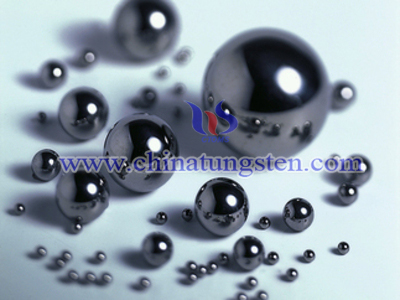
Due to its special properties, tungsten alloy sphere use in the counterweight, fishing weight, counterweights, etc.
Tungsten alloy sphere provides a safer alternative to lead, and their higher density enables them to hold their shape better, even under extreme conditions. While uranium offers comparable density, its volatile nature and the special licensing requirements needed for radioactive materials make working with it difficult.

Tungsten Manufacturer & Supplier: Chinatungsten Online - http://www.chinatungsten.com
Tel.: 86 592 5129696; Fax: 86 592 5129797
Email: sales@chinatungsten.com
Tungsten Picture Center: http://picture.chinatungsten.com
Tungsten Video Center: http://v.chinatungsten.com
Tungsten News & Tungsten Prices, 3G Version: http://3g.chinatungsten.com
Tungsten Alloy Sphere for Counterweight
- Details
- Category: Tungsten Information
- Published on Monday, 22 July 2013 11:31
- Hits: 2183

Tungsten alloy sphere counterweights are incorporated into the pitch control system of many propeller designs as a fail-safe device to prevent over speeding. What's more, tungsten heavy alloy is incorporated into the rotating flywheels of gyroscopic controls for the storage of kinetic energy. Tungsten alloy counterweights are used for adjusting the center of gravity of the triangle and the frequency of oscillation of the laser beams. Bucking bars made of tungsten heavy alloy are ideal for vibration-damping applications with high density.
Usually, space for the counterweight is limited, so the need of heavy but small objects is great. Tungsten alloy sphere, with the density of 16.5/ cm 3 to 18.5/m3 about 50 percent higher than lead and much higher than steel, is ideal for counterweight. Tungsten alloy counterweight as sphere can prolong the life of itself because of its wear resistance and round shape. In addition, lead is toxic while tungsten alloy sphere is environmentally friendly.

Tungsten Manufacturer & Supplier: Chinatungsten Online - http://www.chinatungsten.com
Tel.: 86 592 5129696; Fax: 86 592 5129797
Email: sales@chinatungsten.com
Tungsten Picture Center: http://picture.chinatungsten.com
Tungsten Video Center: http://v.chinatungsten.com
Tungsten News & Tungsten Prices, 3G Version: http://3g.chinatungsten.com
To Build Chinese Carrier of Tungsten Industry
- Details
- Category: Tungsten Information
- Published on Friday, 19 July 2013 15:05
- Hits: 2240
Tungsten resources of Jiangxi province play an important role in China and even in the world. Ganzhou ,one of cities in Jiangxi province,is known as "the tungsten capital of the world".There is a good news that prospecters found 0.35 million tons of tungsten in Wuning. Tungsten resources in the region is expected to amount to more than 1 million tons.
The tungsten industry in Jiangxi province makes great contribution to the economy of Jiangxi province.The income of the state-owned enterprise Jiang Tungsten Holding group topped 1O billion yuan. How can tungsten industry in Jiangxi be stronger than before? How can tungsten industry be more friendly to environment? This is a topic worthing discussing.
Tungsten Manufacturer & Supplier: Chinatungsten Online - http://www.chinatungsten.com
Tel.: 86 592 5129696; Fax: 86 592 5129797
Email: sales@chinatungsten.com
Tungsten Picture Center: http://picture.chinatungsten.com
Tungsten Video Center: http://v.chinatungsten.com
Tungsten News & Tungsten Prices, 3G Version: http://3g.chinatungsten.com
Why Choose Tungsten Alloy as Shaped Charge Liners?
- Details
- Category: Tungsten Information
- Published on Friday, 19 July 2013 14:40
- Hits: 2314
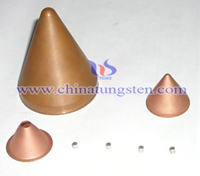
For the deepest penetrations, pure metals yield the best results, because they display the greatest ductility, hence postponing the breakup of the stretching jet into particles. In charges for oil-well completion, however, tungsten alloy shaped charge liner is essential that a solid slug or "carrot" not be formed, since it would plug the hole just penetrated and interfere with the influx of oil. In the petroleum industry, therefore, liners are generally fabricated by powder metallurgy, often of pseudo-alloys, which if tungsten alloy shaped charge liners un-sintered, yield jets that are composed mainly of dispersed fine metal particles.
During World War II, shaped charge liners were made of copper or steel, though other materials were tried or researched. The precision of the charge's construction and shaped charge liners detonation mode were both inferior to modern warheads. This lower precision caused the jet to curve and to break up at an earlier time and hence at a shorter distance. The resulting dispersion decreased the penetration depth for a given cone diameter and also shortened the optimum standoff distance. Since the charges were less effective at larger standoffs, side and turret skirts fitted to some German tanks to protect against Russian anti-tank rifle fire were fortuitously found to give the jet room to disperse and hence reduce its penetrating ability. Now most shaped charge liners are made of tungsten alloy.
The use of tungsten alloy shaped charge liners today may increase the penetration of some warheads. Due to constraints in the length of the projectile/missile, the built in stand-off on many warheads is not the optimum distance. The skirting effectively increases the distance between the amour and the target, providing the warhead with a more optimum standoff and greater penetration if the optimum stand-off is not drastically exceeded. Tungsten alloy shaped charge liners should not be confused with cage amour that is used to damage the fusing system of RPG-7 projectiles. The amour works by deforming the inner and outer orgies and shorting the firing circuit between the rocket's piezoelectric nose probe and rear fuse assembly. If the nose probe strikes the amour, the warhead will function as normal.
The spacing between the shaped charge liners and shaped charge liners target is critical, as there is an optimum standoff distance to achieve the deepest penetration. At short standoffs, the jet does not have room to stretch out, and at long standoffs, tungsten alloy shaped charge liners eventually breaks into particles, which then tend to drift off the shaped charge liners of axis and to tumble, so that the successive particles tend to widen rather than deepen the hole. At very long standoffs, velocity is lost to air drag, degrading penetration further.

Tungsten Manufacturer & Supplier: Chinatungsten Online - http://www.chinatungsten.com
Tel.: 86 592 5129696; Fax: 86 592 5129797
Email: sales@chinatungsten.com
Tungsten Picture Center: http://picture.chinatungsten.com
Tungsten Video Center: http://v.chinatungsten.com
Tungsten News & Tungsten Prices, 3G Version: http://3g.chinatungsten.com
Tungsten Alloy Radiation Shielding for Radioactive Static Eliminator
- Details
- Category: Tungsten Information
- Published on Friday, 19 July 2013 10:35
- Hits: 2241
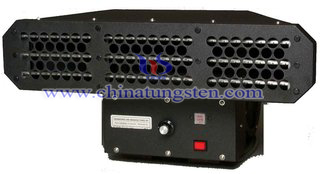
Tungsten alloy radiation shielding can be used for radioactive eliminator to protect staffs from radiation. Radioactive static eliminator is kind of electrostatic removing device which produces ray by utilizing radioactive isotope and ionizes ambient air into positive and negative ions. It gathers opposite charges on the surface of charged body in neutralization.
Radioactive static eliminator is build at the place which may cause static electricity. It releases rays constantly, ionizing air, producing positive and negative ions and changing into conductor. For that, a circuit is formed between the surface of body which cause static electricity and eliminator. Those ions neutralize static charge on the surface of body and eliminate static electricity. Radioactive static eliminator has been widely used for weaving, printing, papermaking, cigarette, rubber, plastic and electronics, sensitive film or other industries. It can be also used to eliminate ash on slide, photographic film, lianr and microbalance, etc.
Compared with lead, the density of tungsten alloy radiation shielding is higher than lead by 60%. High density allows a reduction in physical sizes of shielding components without compromising the effectiveness of shielding characteristics. High density also means better radiation absorption. Otherwise, tungsten alloy has the advantage of non-toxicity. So tungsten alloy is more suitable for radioactive static eliminator than lead.

Tungsten Manufacturer & Supplier: Chinatungsten Online - http://www.chinatungsten.com
Tel.: 86 592 5129696; Fax: 86 592 5129797
Email: sales@chinatungsten.com
Tungsten Picture Center: http://picture.chinatungsten.com
Tungsten Video Center: http://v.chinatungsten.com
Tungsten News & Tungsten Prices, 3G Version: http://3g.chinatungsten.com
Tungsten Alloy Shielding for Irradiation Linac
- Details
- Category: Tungsten Information
- Published on Friday, 19 July 2013 10:27
- Hits: 2261
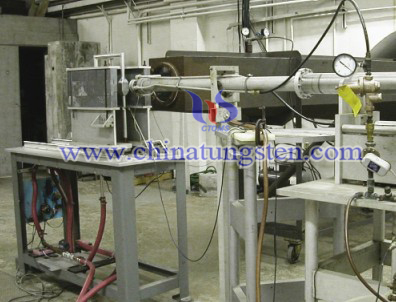
Tungsten alloy shielding is necessary for irradiation linac. Electrons caused by irradiation linac are shielded easily for having small exit range. But they can cause strong bremstrahlung, being resisting by components of irradiation linac, cable as irradiated target, barrier plate, floor or other materials. Maximum energy of bremmstrahlung is possible maximum electron energy. Generally, irradiation linac will not cause photonuclear reaction and induced radioactivity, if energy is no more than 10MeV. For that, bremsstrahlung (X-ray) is primary target which must be shielded for irradiation linac.
Emissivity of X-ray caused by irradiation linac is relevant to electron energy, beam intensity, atomic number of target material, thickness of target or other factors and it changes with exit angle. For definite target material Z and thickness of target, emissivity of X-ray which is corresponding to unity beam intensity increases significantly with the increasing energy of accelerated electron and angular distribution of emissivity also changes with the increasing of electron energy.
Lead is used as traditional raw materials for radiation shielding. But lead has toxicity which may cause pollution. The density of tungsten alloy is higher than lead by 60%. The high density of tungsten alloy shielding allows a reduction in physical sizes of shielding components, without compromising effectiveness of shielding characteristics. Otherwise, tungsten alloy shielding has the advantages of non-toxicity. So compared with, tungsten alloy is more suitable for irradiation linac to shield against X-ray.

Tungsten Manufacturer & Supplier: Chinatungsten Online - http://www.chinatungsten.com
Tel.: 86 592 5129696; Fax: 86 592 5129797
Email: sales@chinatungsten.com
Tungsten Picture Center: http://picture.chinatungsten.com
Tungsten Video Center: http://v.chinatungsten.com
Tungsten News & Tungsten Prices, 3G Version: http://3g.chinatungsten.com
Tungsten Alloy Ballast for Vehicle
- Details
- Category: Tungsten Information
- Published on Thursday, 18 July 2013 11:16
- Hits: 2174
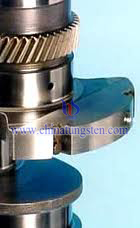
Drivers consistently report they can sense differences in how a car handles on the track if the weight on a given wheel varies only by a couple of pounds. Fine tuning a car to a given track is a very cumbersome and time consuming ordeal with conventional lead plate weights. Tungsten alloy vehicle ballast as block shape offers up to 50% more weight in a given volume, with the added advantages of direct attachment via threaded holes or thru-bolting and the freedom from deformation. The high density of tungsten heavy alloys (WHAs) permit weights to be placed in the lower half of NASCAR weight adjustment tubes, effectively lowering the overall center of gravity for improved handling.
Tungsten alloy vehicle ballast, also called tungsten alloy vehicle weight, is now becoming the most popular material for balancing race cars.
Adding tungsten alloy vehicle ballast to the framework of a racing car helps you to balance the car during the race. Better balance contributes to the better control over the car's movement and helps to optimize the overall performance.

Tungsten Manufacturer & Supplier: Chinatungsten Online - http://www.chinatungsten.com
Tel.: 86 592 5129696; Fax: 86 592 5129797
Email: sales@chinatungsten.com
Tungsten Picture Center: http://picture.chinatungsten.com
Tungsten Video Center: http://v.chinatungsten.com
Tungsten News & Tungsten Prices, 3G Version: http://3g.chinatungsten.com
Tungsten Alloy for Airborne Antenna Bases
- Details
- Category: Tungsten Information
- Published on Thursday, 18 July 2013 10:22
- Hits: 2246
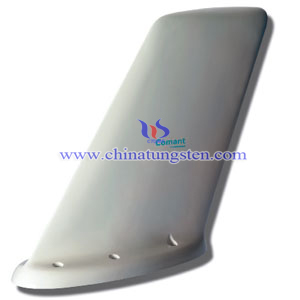
There have been many proposed applications for clusters of small Unmanned Aerial Vehicles (UAVs). Some of these applications, such as air antenna bases, Synthetic Aperture Radar and video surveillance, can generate large quantities of data which must be transmitted to a base station quickly. UAV size limitations often prevent the use of large, highly directive antennas in this link with the airborne antenna bases station. This paper proposes the solution of forming an array from several UAVs and applies antenna array theory to analyze its performance. An example is given where tungsten alloy is used to achieve high directivity even in the presence of element position errors. Tungsten alloy is the best material to make airborne antenna bases.
Tungsten Manufacturer & Supplier: Chinatungsten Online - http://www.chinatungsten.com
Tel.: 86 592 5129696; Fax: 86 592 5129797
Email: sales@chinatungsten.com
Tungsten Picture Center: http://picture.chinatungsten.com
Tungsten Video Center: http://v.chinatungsten.com
Tungsten News & Tungsten Prices, 3G Version: http://3g.chinatungsten.com
Tungsten for Gyroscope Rotors
- Details
- Category: Tungsten Information
- Published on Thursday, 18 July 2013 09:43
- Hits: 2212

A tungsten alloy gyroscope rotor is a device for measuring or maintaining orientation, based on the principles of angular momentum. A mechanical they are essentially a spinning wheel or disk whose axle is free to take any orientation. This orientation changes much less in response to a given external torque than it would without the large angular momentum associated with the gyroscope's high rate of spin. Since external torque is minimized by mounting the device in gimbals, its orientation remains nearly fixed, regardless of any motion of the platform on which it is mounted. Solid state gyroscopes also exist.
Applications of tungsten alloy gyroscopes rotors include navigation (INS) when magnetic compasses do not work (as in the Hubble telescope) or are not precise enough (as in ICBMs) or for the stabilization of flying vehicles like Radio-controlled helicopters or UAVs. Due to higher precision, tungsten alloy gyroscope rotors are also used to maintain direction in tunnel mining.
Gyroscope rotors exhibit a number of behaviors including precession and notations. Tungsten heavy alloy gyroscope rotors can be used to construct gyrocompasses which complement or replace magnetic compasses (in ships, aircraft and spacecraft, vehicles in general), to assist in stability (bicycle, Hubble Space Telescope, ships, vehicles in general) or be used as part of an inertial guidance system. It effects are used in toys like tops, boomerangs, yo-yos, and Powerball's. Many other rotating devices, such as flywheels, behave gyroscopically although the gyroscopic effect is not used.
Tungsten alloy gyroscope rotors in operation have freedom of movement in all three axes. The tungsten alloy gyroscope rotors will maintain its spin axis direction regardless of the orientation of the outer frame. With its perfect properties, tungsten alloy is the perfect material for gyroscope rotors.

Tungsten Manufacturer & Supplier: Chinatungsten Online - http://www.chinatungsten.com
Tel.: 86 592 5129696; Fax: 86 592 5129797
Email: sales@chinatungsten.com
Tungsten Picture Center: http://picture.chinatungsten.com
Tungsten Video Center: http://v.chinatungsten.com
Tungsten News & Tungsten Prices, 3G Version: http://3g.chinatungsten.com
Tungsten Silicide
- Details
- Category: Tungsten Information
- Published on Wednesday, 17 July 2013 11:33
- Hits: 2103
Tungsten silicide also named tungsten poly, poly tungsten. For using WSi2/n+ poly-si instead of n+ poly-si gate and interconnection,the multiply/accumulation time has failed from 125ns to 99ns.
1000A tungsten silicide film has been deposited on 1500A .polycrystalline silicon doped by POCL3.The.composite film was annealed at 1000C in N2 atomsphere.The sheet resistance is about 3.7ohm.per.square,calculated tungsten silicide resistivity is 41.4 uohm.cm. Tungsten silicide has been used in CMOS 12X12 bit multiplier,device feature size is Sum.
Tungsten Manufacturer & Supplier: Chinatungsten Online - http://www.chinatungsten.com
Tel.: 86 592 5129696; Fax: 86 592 5129797
Email: sales@chinatungsten.com
Tungsten Picture Center: http://picture.chinatungsten.com
Tungsten Video Center: http://v.chinatungsten.com
Tungsten News & Tungsten Prices, 3G Version: http://3g.chinatungsten.com




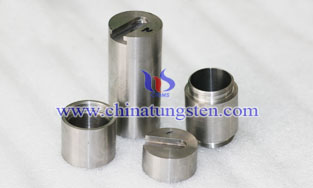


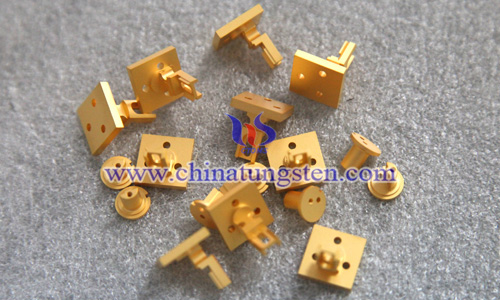

 sales@chinatungsten.com
sales@chinatungsten.com